mobile View, to the German Version tap the flag


- Autonomous Region of Spain
- also: New Castile
- 1085–1833 Kingdom of Toledo
- own name:
Spanish: Castilla-La Mancha
• Flag
• Historical and other Flags
• Meaning/Origin of the Flag
• Coat of Arms
• Historical Coats of Arms
• Meaning/Origin of the Coat of Arms
• Map of the autonomous regions of Spain
• Numbers and Facts
• History
• Origin of the Country's Name
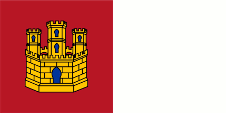
since 1980,
Flag of Castile-La Mancha,
ratio = 1:2,
Source, by: Flags of the World, World Statesmen





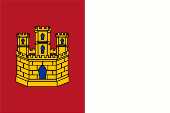
since 1980,
official Flag of Castile-La Mancha,
ratio = 2:3,
Source, by: Flags of the World, Wikipedia (ES)






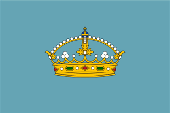
1085–1833,
Flag of the Kingdom of Toledo,
ratio = 2:3,
Source, by: Wikipedia (ES)




The flag of Castile-La Mancha was officially adopted on 25th of January in 1980 and confirmed by law on 17th of August in 1982, when the Autonomous Community of Castile-La Mancha was created. However, the flag had already been in unofficial use since 1978. It shows the image of the coat of arms (according to the law, the coat of arms shows the image of the flag!), is divided vertically and shows two fields in crimson and white, as well as a golden castle with three towers in the centre of the red field. The red field of the flag, with the castle, corresponds to the traditional heraldry of Castile, but not of New Castile, the former Castilian Kingdom of Toledo, on whose territory Castile-La Mancha now lies. The Castilian Kingdom of Toledo had as its coat of arms a light blue shield with a crown in it. The white field of the flag is meant to recall the cloaks of the knights and crusaders who liberated the region of present-day Castile-La Mancha from the yoke of the Arabs in the 12th and 13th centuries. Under the government of General Franco (1936–1975), all regional flags were banned. After Franco's death (1975), the regional flags were reintroduced or new ones were created. Castile-La Mancha did not exist until then, so it did not have its own flag before, so the new flag was introduced in 1978, albeit unofficially at first, as Castile-La Mancha did not have autonomous status until 1982. Offices and authorities comply with the requirements of Article 39.1981 of Spanish Law 6/2, which stipulates that on several poles, one of which displays the Spanish flag, no flag may be larger than the Spanish flag itself. In this respect, offices and authorities fly the flag in a 2:3 aspect ratio. Private individuals adhere to the Organic Law Nr. 9/1982 of 10th of October in 1982 on the Statute of Autonomy of Castile-La Mancha, which prescribes an aspect ratio of 1:2. In practice, the flag is reproduced in many formats, and even the crimson shows many variations that can go as far as purple, because the shade of red is not fixed.
Source: Wikipedia (ES),
Flags of the World,
World Statesmen,
Volker Preuß


since 1983,
Coat of arms of Castile-La Mancha,
Source, by: HansenBCN,
CC BY-SA 3.0, via Wikimedia Commons

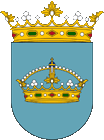
1085–1833,
Coat of arms of the Kingdom of Toledo,
Source, by: Wikipedia (ES)

The coat of arms of Castile-La Mancha was created on 30th of June in 1983, after the Autonomous Community of Castile-La Mancha was founded in 1982. Curiously, the flag was the model for it. The shield is split (divided per pas) and shows in its heraldic right half the heraldry of Castile: a golden castle with three towers on a (crimson-)red background. The heraldic left half is plain white and is intended to recall the coats of arms of the knights and crusaders who liberated the region of present-day Castile-La Mancha from the yoke of the Arabs in the 12th and 13th centuries. A royal crown appears above the escutcheon. The red field with the castle corresponds to the traditional heraldry of Castile, but not of New Castile, the former Castilian Kingdom of Toledo, on whose territory Castile-La Mancha now lies. The Castilian Kingdom of Toledo had as its coat of arms a light blue shield with a crown in it.
Source: Wikipedia (ES), Volker Preuß

The autonomous Regions of Spain:
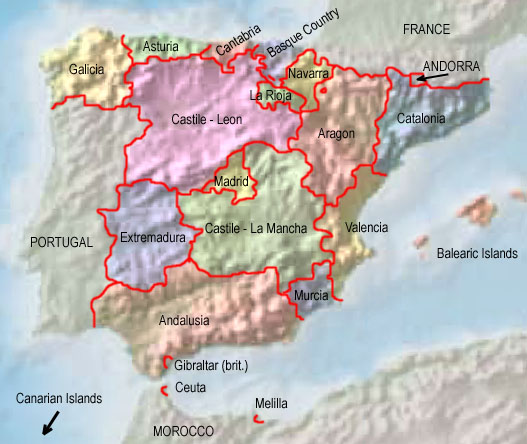
Source: Freeware, University of Texas Libraries, modyfied by: Volker Preuß

Area: 30.681 square miles
Inhabitants: 2.069.423 (2022), mostly New Castilians
Density of Population: 67 inh./sq.mi.
Capital: Toledo, 85.085 inh. (2022)
official Language: Spanish (Castilian)
Currency: Spanish (Euro) currency
Time Zone: GMT + 1 h
Source: Wikipedia (DE)

The areas of Castile north of the mountains of the Central System (it extends from southwest to northeast) are called Old Castile and were liberated from the Arabs until about 1050. Today's Castile-La Mancha is the original New Castile, a vast territory in central Spain, south of the mountains of the Central System. These territories were liberated from the Arabs until around 1220, but the Castilian Kingdom of Toledo was established in New Castile already in 1085 and lasted until 1833. Afterwards, the whole of Castile and the Castilian Kingdom of Toledo were divided into provinces, New Castile into the provinces of Madrid, Guadalajara, Cuenca, Albacete, Ciudad Real and Toledo, from which the Autonomous Community of Castile-La Mancha emerged on 16th of August in 1982. Madrid became its own autonomous community on 1st of March in 1983.
Source: Wikipedia (DE),
Volker Preuß

The name "Castile-La Mancha" combines the terms "Castile" and "La Mancha". Today, the geographical term "Castile" means a huge territory in central Spain. This huge area was defined only in connection with the liberation of the Iberian Peninsula from the Muslims, the so-called Reconquista, and the consequent expansion of the territory of the original Castile. The territories north of the mountains of the Central System (it extends from southwest to northeast) are called Old Castile and were liberated from the Arabs until about 1050. The areas south of it are called New Castile and were liberated from the Arabs until about 1220. The geographical term "La Mancha" refers to a plateau in southern New Castile, a steppe land with a harsh climate, very long, hot summers, and lack of water. The term "La Mancha" has Arabic roots, the Arabs had influence in this region for 500 years, "Al Manschara" means "The dry land".
Source: Volker Preuß, Handbuch der geographischen Namen


![]()













